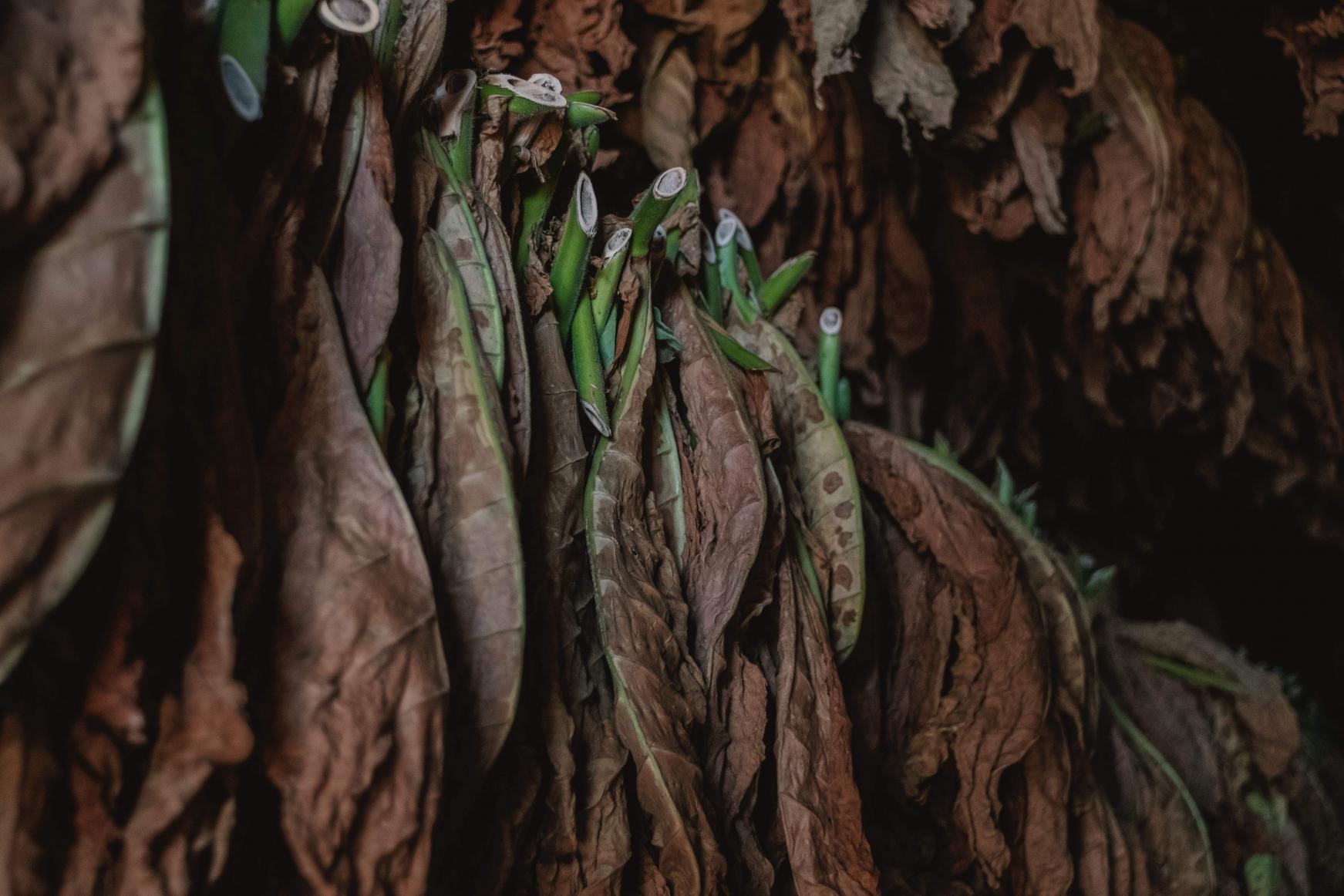Three parts of the tobacco plant and their distinct flavor characteristics (Volado, Seco, Ligero) are crucial to cigar manufacturers. Tobacco farmers who cultivate the plant must look out for four additional parts.
There are around 75 types of tobacco that grow primarily in tropical and sub-tropical climates. However, only the two varieties Nicotiana tabacum (Virginian tobacco) and Nicotiana rustica (wild tobacco) are being cultivated. Like tomatoes or potatoes, the tobacco plant is a member of the nightshade family. The tobacco industry is only interested in the leaves, not the tuberous roots or fruits. These are graded by position on the stalk and divided into three categories: lower-middle leaves (Volado), upper-middle leaves (Seco), and top leaves (Ligero).
Lower-middle leaves and lugs – Volado
The two-to-three leaves lowest to the ground are called lugs. They dry on the growing plant and turn brown and yellow quickly. The three-to-four leaves above are called lower-middle leaves. In Spanish, lugs and lower-middle leaves are summarized as Volado leaves and harvested first. These thin and light leaves are particularly sought after as binders or fillers. Tobacco leaves are harvested at intervals, starting from the bottom of the plant to the top. Only a few leaves are picked based on their maturity level daily. Thus, lugs are harvested after the lower-middle leaves. The lower-middle leaves are ready for harvest when the rich green leaves have turned light green. Volado leaves have little effect on a cigar’s strength and taste since they have little flavor. However, their fine texture ensures an even and consistent burn.

Upper-middle leaves – Seco
Farmers may harvest no more than two-to-three tobacco leaves per day. Moreover, they have to wait approximately one week between harvesting the lower-middle leaves and the upper-middle leaves. The upper-middle leaves are the six-to-eight leaves found in the plant’s middle section. These Seco leaves are considerably aromatic and are typically used as filler. Tobacco leaves are covered with plant hairs. These hairs are glands that coat the leaf surface with a sticky layer about one and a half millimeters thick. Oil stains that form on the leaves are a good sign that the plant is ready for harvest.
Top leaves – Ligero
The two-to-three uppermost leaves of the tobacco plant are called top leaves. Although these thick and up to 80 cm long leaves are called Ligero (“light” in Spanish), they develop an extremely potent flavor. That’s because they are exposed to the most sun. The last tobacco leaves are harvested 70 to 130 days after sowing. During that period, farmers check each plant around 150 times before harvesting the leaves by hand. The tobacco grower takes the end of the leaf in his hand and presses the thumb on the stem. He has to be careful not to damage the plant because the upper leaves should continue to ripen for several days or even weeks.
Roots, stalks, flower, and suckers
Although four additional parts of the tobacco plant are not used in cigar making, they are essential for cultivation. Nicotine is synthesized in the roots and then transported through the stalk to the leaves. The flowers are only desired in those plants cultivated for seed production. The flowers of tobacco plants that are cultivated for leaf harvest, on the other hand, are cut off early. This so-called topping prevents the plant from putting energy into the formation of flowers and fruit and redirects it into leaf development. However, topping the plant leads to rapid side shoot formation at the leaf axil (similar to tomatoes), which quickly grow inflorescences. These so-called suckers must also be removed continuously and carefully to ensure that the energy from the soil and the sun goes into the leaves.

Interesting facts
Below is a list of interesting info about the anatomy and cultivation of the tobacco plant, with which aficionadas and aficionados are sure to impress their friends at the next smoke session. We have summarized some of them here for you:
- Humus-rich soil produces leaves with a more potent, spicy aroma.
- Cigar tobacco for binders and fillers thrives in the open air. Tobacco plants for wrappers get their uniformity and smooth texture by growing them under tents constructed out of thin cheesecloth.
- The first tobacco seeds did not arrive in Europe until around 1560, where tobacco was first an ornamental plant – a broth boiled from leaves was used for insect control.
- Tobacco also contains substances like calcium, magnesium, and iron (in small quantities). A cigar contains 6,000 to 12,000 substances – although not all of them are known yet.
- Approximately 97% of the nicotine is located in the tobacco plant’s roots, from where it is transported to the stalk, leaves, and flowers.
- Nicotine serves as a natural defense against pests. It discourages insects from eating the plant by destroying their nervous system.